Farima Fatahi Bayat
FactBench: A Dynamic Benchmark for In-the-Wild Language Model Factuality Evaluation
Oct 29, 2024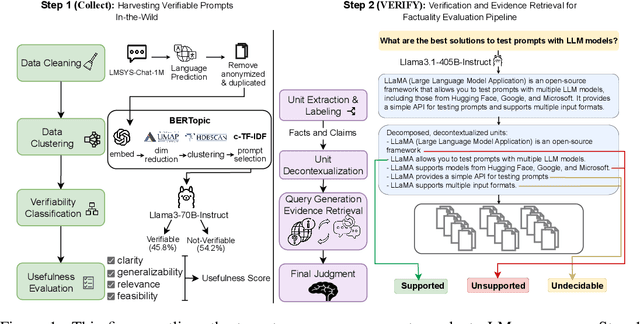
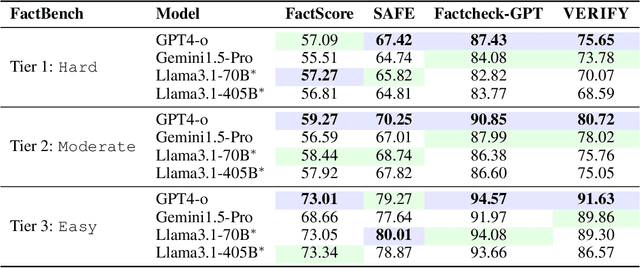

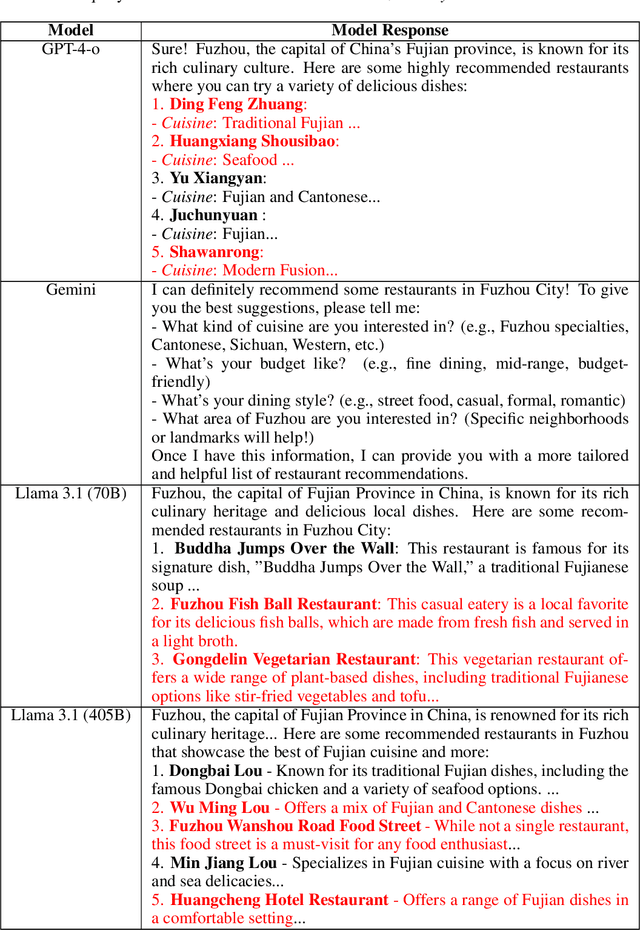
Abstract:Language models (LMs) are widely used by an increasing number of users, underscoring the challenge of maintaining factuality across a broad range of topics. We first present VERIFY (Verification and Evidence RetrIeval for FactualitY evaluation), a pipeline to evaluate LMs' factuality in real-world user interactions. VERIFY considers the verifiability of LM-generated content and categorizes content units as supported, unsupported, or undecidable based on the retrieved evidence from the Web. Importantly, factuality judgment by VERIFY correlates better with human evaluations than existing methods. Using VERIFY, we identify "hallucination prompts" across diverse topics, i.e., those eliciting the highest rates of incorrect and inconclusive LM responses. These prompts form FactBench, a dataset of 1K prompts across 150 fine-grained topics. Our dataset captures emerging factuality challenges in real-world LM interactions and can be regularly updated with new prompts. We benchmark widely-used LMs from GPT, Gemini, and Llama3.1 family on FactBench, yielding the following key findings: (i) Proprietary models exhibit better factuality, with performance declining from Easy to Hard hallucination prompts. (ii) Llama3.1-405B-Instruct shows comparable or lower factual accuracy than Llama3.1-70B-Instruct across all evaluation methods due to its higher subjectivity that leads to more content labeled as undecidable. (iii) Gemini1.5-Pro shows a significantly higher refusal rate, with over-refusal in 25% of cases. Our code and data are publicly available at https://huggingface.co/spaces/launch/factbench.
APE: Active Learning-based Tooling for Finding Informative Few-shot Examples for LLM-based Entity Matching
Jul 29, 2024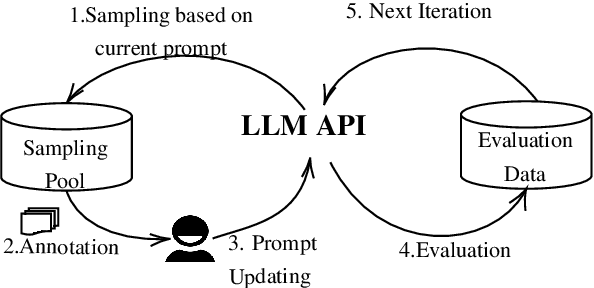
Abstract:Prompt engineering is an iterative procedure often requiring extensive manual effort to formulate suitable instructions for effectively directing large language models (LLMs) in specific tasks. Incorporating few-shot examples is a vital and effective approach to providing LLMs with precise instructions, leading to improved LLM performance. Nonetheless, identifying the most informative demonstrations for LLMs is labor-intensive, frequently entailing sifting through an extensive search space. In this demonstration, we showcase a human-in-the-loop tool called APE (Active Prompt Engineering) designed for refining prompts through active learning. Drawing inspiration from active learning, APE iteratively selects the most ambiguous examples for human feedback, which will be transformed into few-shot examples within the prompt. The demo recording can be found with the submission or be viewed at https://youtu.be/OwQ6MQx53-Y.
Enhancing Language Model Factuality via Activation-Based Confidence Calibration and Guided Decoding
Jun 19, 2024Abstract:Calibrating language models (LMs) aligns their generation confidence with the actual likelihood of answer correctness, which can inform users about LMs' reliability and mitigate hallucinated content. However, prior calibration methods, such as self-consistency-based and logit-based approaches, are either limited in inference-time efficiency or fall short of providing informative signals. Moreover, simply filtering out low-confidence responses reduces the LM's helpfulness when the answers are correct. Therefore, effectively using calibration techniques to enhance an LM's factuality remains an unsolved challenge. In this paper, we first propose an activation-based calibration method, ActCab, which trains a linear layer on top of the LM's last-layer activations that can better capture the representations of knowledge. Built on top of ActCab, we further propose CoDec, a confidence-guided decoding strategy to elicit truthful answers with high confidence from LMs. By evaluating on five popular QA benchmarks, ActCab achieves superior calibration performance than all competitive baselines, e.g., by reducing the average expected calibration error (ECE) score by up to 39%. Further experiments on CoDec show consistent improvements in several LMs' factuality on challenging QA datasets, such as TruthfulQA, highlighting the value of confidence signals in enhancing factuality.
LITO: Learnable Intervention for Truthfulness Optimization
May 01, 2024
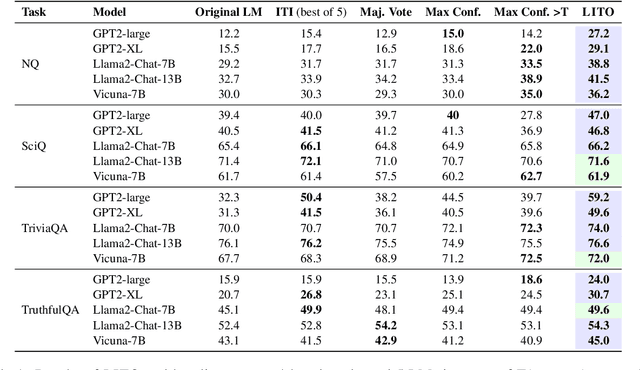


Abstract:Large language models (LLMs) can generate long-form and coherent text, but they still frequently hallucinate facts, thus limiting their reliability. To address this issue, inference-time methods that elicit truthful responses have been proposed by shifting LLM representations towards learned "truthful directions". However, applying the truthful directions with the same intensity fails to generalize across different question contexts. We propose LITO, a Learnable Intervention method for Truthfulness Optimization that automatically identifies the optimal intervention intensity tailored to a specific context. LITO explores a sequence of model generations based on increasing levels of intervention intensities. It selects the most accurate response or refuses to answer when the predictions are highly uncertain. Experiments on multiple LLMs and question-answering datasets demonstrate that LITO improves truthfulness while preserving task accuracy. The adaptive nature of LITO counters issues with one-size-fits-all intervention-based solutions, maximizing model truthfulness by reflecting internal knowledge only when the model is confident.
FLEEK: Factual Error Detection and Correction with Evidence Retrieved from External Knowledge
Oct 26, 2023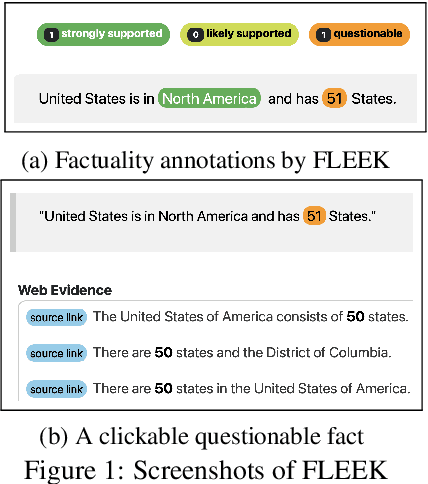

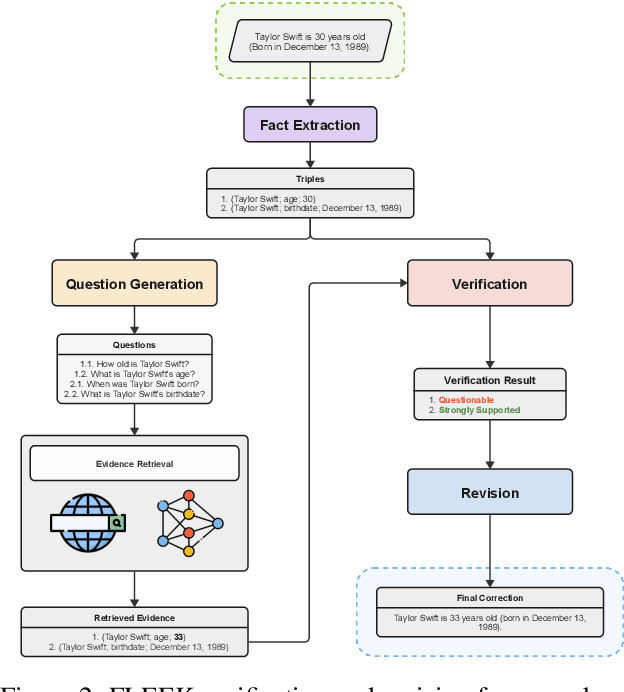
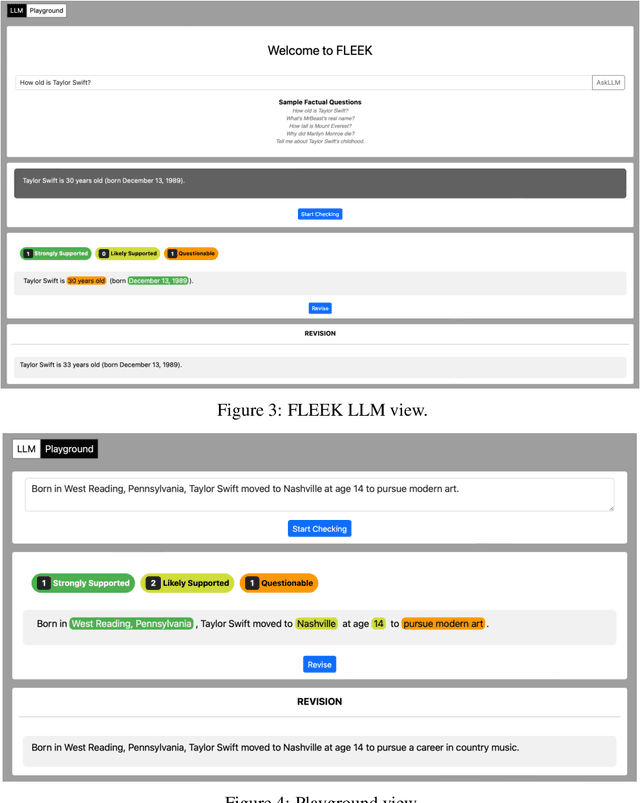
Abstract:Detecting factual errors in textual information, whether generated by large language models (LLM) or curated by humans, is crucial for making informed decisions. LLMs' inability to attribute their claims to external knowledge and their tendency to hallucinate makes it difficult to rely on their responses. Humans, too, are prone to factual errors in their writing. Since manual detection and correction of factual errors is labor-intensive, developing an automatic approach can greatly reduce human effort. We present FLEEK, a prototype tool that automatically extracts factual claims from text, gathers evidence from external knowledge sources, evaluates the factuality of each claim, and suggests revisions for identified errors using the collected evidence. Initial empirical evaluation on fact error detection (77-85\% F1) shows the potential of FLEEK. A video demo of FLEEK can be found at https://youtu.be/NapJFUlkPdQ.
CompactIE: Compact Facts in Open Information Extraction
May 05, 2022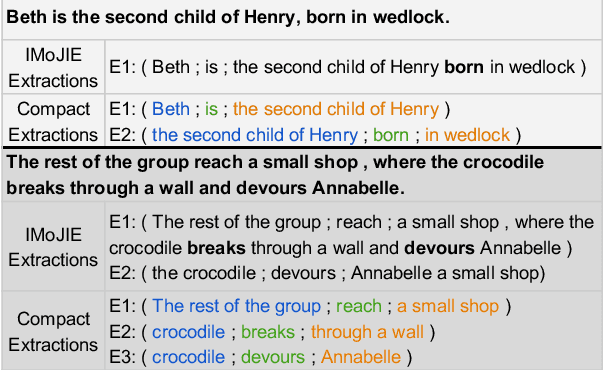

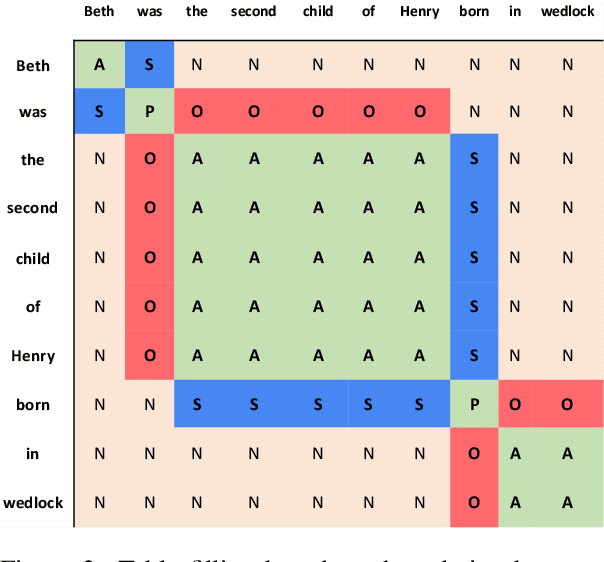

Abstract:A major drawback of modern neural OpenIE systems and benchmarks is that they prioritize high coverage of information in extractions over compactness of their constituents. This severely limits the usefulness of OpenIE extractions in many downstream tasks. The utility of extractions can be improved if extractions are compact and share constituents. To this end, we study the problem of identifying compact extractions with neural-based methods. We propose CompactIE, an OpenIE system that uses a novel pipelined approach to produce compact extractions with overlapping constituents. It first detects constituents of the extractions and then links them to build extractions. We train our system on compact extractions obtained by processing existing benchmarks. Our experiments on CaRB and Wire57 datasets indicate that CompactIE finds 1.5x-2x more compact extractions than previous systems, with high precision, establishing a new state-of-the-art performance in OpenIE.
 Add to Chrome
Add to Chrome Add to Firefox
Add to Firefox Add to Edge
Add to Edge